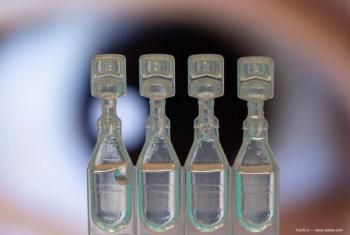
Multiple routes of administration viable for endophthalmitis prophylaxis
San Francisco-Although the debate continues regarding the pros and cons of different approaches to antibiotic prophylaxis for postoperative endophthalmitis, available data are clear in demonstrating that it is critical to assure an effective concentration is present at the time of surgery and maintained in the early postoperative period, said Randall J. Olson, MD, John A. Moran Presidential Professor and chairman of the Department of Ophthalmology and Visual Sciences, University of Utah School of Medicine, Salt Lake City.
San Francisco-Although the debate continues regarding the pros and cons of different approaches to antibiotic prophylaxis for postoperative endophthalmitis, available data are clear in demonstrating that it is critical to assure an effective concentration is present at the time of surgery and maintained in the early postoperative period, said Randall J. Olson, MD, John A. Moran Presidential Professor and chairman of the Department of Ophthalmology and Visual Sciences, University of Utah School of Medicine, Salt Lake City.
Reviewing the literature on this topic, Dr. Olson said that although intracameral cefuroxime is the only prophylactic regimen that has been demonstrated effective in a prospective, randomized controlled study, reasonably good evidence also exists supporting the conclusion that antibiotics administered topically or even by subconjunctival injection are effective for decreasing endophthalmitis risk.
Published results from analyses of data collected at the John Moran Eye Center, University of Utah School of Medicine, showed that in a regimen including frequent use of topical fourth-generation fluoroquinolones on the day of surgery, the incidence of endophthalmitis was about 0.06%.
"However, in a multivariate analysis, we found a 14-fold increased incidence if the antibiotic was started on the day after surgery," he said. "Keep in mind, however, that we are also very careful to suture any incision where the integrity is questionable."
Looking ahead, Dr. Olson said he anticipates that intracameral antibiotic use will become standard, but only with the availability of a commercially available unit-dose preparation. Which antibiotic will be marketed in this manner remains to be seen, but it will need to address concerns relating to emerging microbial resistance, and surgeons should expect that intracameral injection will not be a stand-alone technique but rather used in combination with topical treatment, he concluded.
Newsletter
Don’t miss out—get Ophthalmology Times updates on the latest clinical advancements and expert interviews, straight to your inbox.














































.png)


